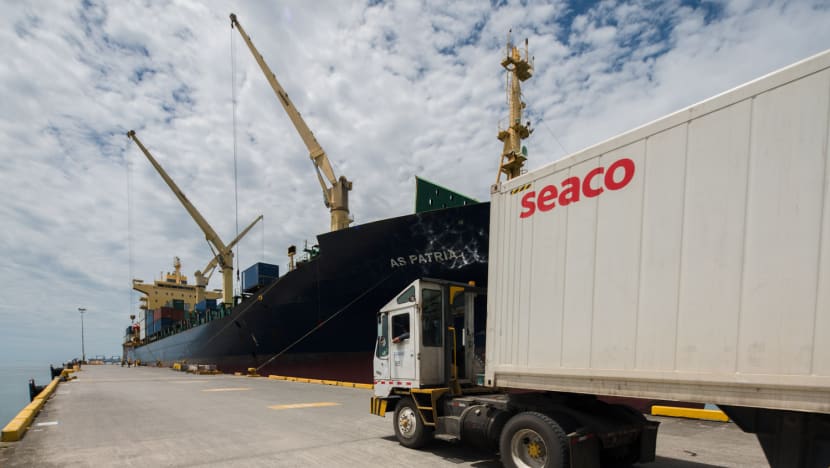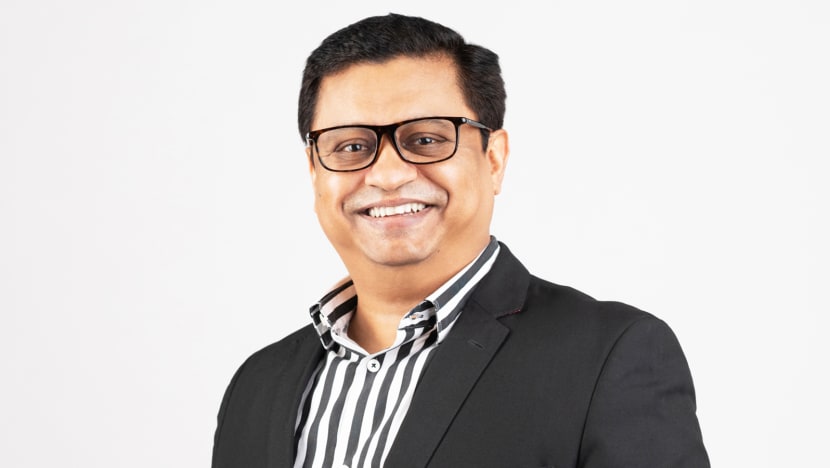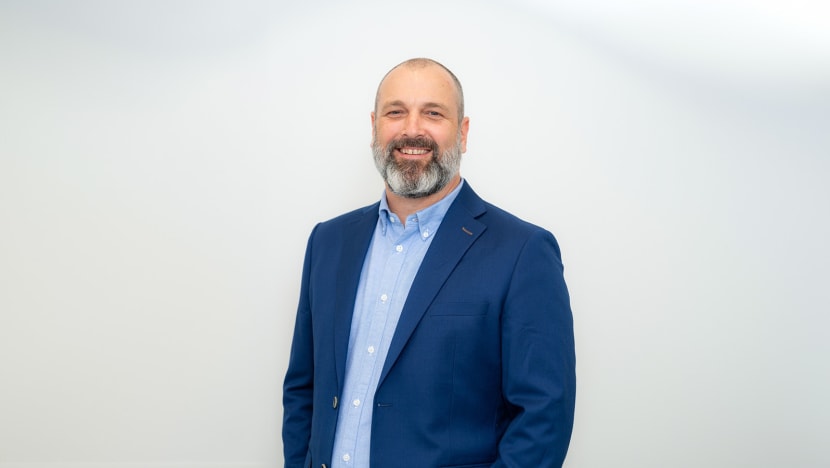Navigating digital transformation in competitive waters
Powered by its partnership with Tata Communications, container leasing company Seaco is building a digital fabric to accelerate its journey towards technological innovation.

The shipping industry’s digital tranformation involves enhancing ship-to-shore communications and developing efficient ways of analysing large volumes of data. Photos: Seaco and Tata Communications

This audio is generated by an AI tool.
The shipping industry is no stranger to disruption. Mr Damian Leach, chief information officer of container leasing company Seaco, listed pandemics, wars, supply chain issues and piracy as challenges that maritime companies must navigate to build a sustainable and agile business.
The sector is also undergoing a sea change as it seeks to decarbonise and accelerate digital transformation. This shift aims to enhance ship-to-shore communications, as well as develop cost-effective, efficient ways of storing and analysing large volumes of data.
Mr Amitabh Sarkar, head of Asia Pacific (Enterprise) at Tata Communications, noted that customers view geopolitical tension and the pace of technological advancements as the primary forces driving change.
Despite these challenges, companies across various sectors are expressing cautious optimism. Said Mr Sarkar: “Many of our global customers are starting to reap the benefits of their digital transformation initiatives and expect a significant improvement in outlook, despite the uncertainty caused by global events.”
UNIFYING NETWORK, CLOUD AND SECURITY

Tata Communications develops customised secure access service edge (SASE) plans for various industries, utilising over 400 lab-validated strategies and advanced simulations to replicate customer environments. By leveraging artificial intelligence (AI) and automation, Tata Communications is able to ensure first-time-right SASE deployment for its customers on a global scale.
The firm’s SASE platform stands out for its ability to tackle the challenges faced by the shipping sector, offering a unified, cloud-native solution that enhances security, operational efficiency, cost-effectiveness and user experience. Organisations such as Seaco have invested in Tata Communications’ unified security and networking SASE platform to accelerate their journeys to cloud.
“This convergence simplifies the management of IT infrastructure by providing comprehensive security and networking capabilities,” said Mr Sarkar. “This not only eliminates the need for multiple-point solutions, reducing complexity and cost, but also enhances security and performance.”
He added that the fault diagnosis capabilities offered by the SASE platform have set a new industry benchmark, resulting in quicker resolutions and reduced downtime.
According to Mr Leach, Seaco has anchored its digital transformation strategy in three areas: People, systems and experiences. “Our focus is on abstracting services from technology platforms, which reduces complexity, speeds up delivery and allows us to innovate more quickly,” he said.
A significant step for the company is migrating its remaining on-premises infrastructure to its cloud service regions in Singapore, Japan, Australia, Germany and the Americas, with the aim of being 100 per cent cloud-only by the first quarter of 2025.

“This approach mitigates the risk of on-premises legacy systems through cutting-edge hyperscaler and cloud-native security technologies. It also allows us to take advantage of big data, as well as advancements in AI and machine learning,” said Mr Leach.
Legacy systems often struggle with running multi-dimensional big data queries, frequently crashing or timing out. However, Seaco’s big data platforms can now run simultaneous queries over hundreds of millions of rows containing different data types, generating answers in seconds.
“Being able to tap on big data analytics to examine complex data models has helped us manage challenging business use cases and adapt quickly to changing market demands,” said Mr Leach.
By closely collaborating with Tata Communications, Seaco has also gained access to a flexible pool of skills and professional services that can be leveraged for strategic projects as needed.
“Having this level of flexibility is crucial as we harness elastic compute capabilities to support super-high-volume transactions for billing, finance, collections and invoice dispatch every month,” explained Mr Leach. “Scaling cloud resources on demand empowers us to manage IT costs while meeting business needs in real time.”
Mr Sarkar added that Tata Communications’ offerings enable customers to seamlessly achieve scale, flexibility and intelligence. These capabilities include deploying on-demand gateways remotely, rapidly establishing a network of nodes within a country, and using virtual network functions in the cloud to create networks in days rather than weeks.
“By providing an integrated digital infrastructure across network, cloud, edge and managed services, we help organisations focus on their core competencies while fostering growth and scalability in their businesses,” said Mr Sarkar.
A UNIFIED SOLUTIONS PROVIDER
Seaco is streamlining its cybersecurity tools to improve insights while integrating a security operations centre into its IT ecosystem. The Zero Trust Network Access behind Tata Communications’ SASE platform plays a key role in this process. It grants access only to authorised users and devices, continuously verifying them to minimise the risk of unauthorised access and data breaches.
Mr Leach shared that with the help of Tata Communications, Seaco has simplified its global network by connecting all its geographically dispersed cloud regions with dual direct connect circuits for production and disaster recovery. Dual circuits provide backup, ensuring continuous operations even if one link fails.
Seaco also uses a mix of network connections, including MPLS (multiprotocol label switching), SD-WAN (software-defined wide area network) and regular Internet, tailored to each office’s location and the growing needs of its global business. Tata Communications aligns all connectivity to ensure an optimal network setup that meet Seaco’s standards at every site.
“This not only saves the company money but also bolsters resilience for our key locations under a single global Tata Communications contract through unified service level agreements,” said Mr Leach.
He noted that Tata Communications’ comprehensive coverage, including essential direct connect cloud services, has enabled Seaco to build a global and diverse connectivity backbone for its business data, communication, finance and transaction services. This robust digital fabric not only boosts operational efficiency but also enhances adaptability during turbulent economic conditions.
“We will continue to advance data-driven decisions through the right mix of people, systems and experiences, utilising AI to solve business problems while continually innovating and experimenting with new ideas,” said Mr Leach. “Working with forward-thinking partners like Tata Communications is important for organisations to adapt and thrive.”
Learn more about partnering with Tata Communications to drive your organisation’s digital transformation.















